La Mairie de Paris who runs the Petit Palais should invite all their employees to see the new exhibition of Théodore Rousseau (1812-1867)’s paintings and drawings, ” The Voice of the Forest”. Especially the mayor Anne Hidalgo and her deputy Dan Lert, who recently replaced trees with wooden pots (see the picture below) on place Saint Augustin… The painter asked the very powerful Minister of Interior of the time, Duc de Morny (the illegitimate half brother of Napoléon III), to sacralize part of the Fontainebleau forest for the painters of Barbizon. With a ban on cutting the older oaks whom Rousseau actually named each individually. The exhibition is full of beautiful sceneries, extravagant landscapes and each tree is treated as a character. Three of his panoramic landscapes were included in the “True to Nature” exhibition at Fondation Custodia, two years ago, where Ger Luijten exhibited rocks as stars… And, like the Louvre, the V&A and the Mesdag collection in the Hague…, they have lent some drawings for this show, where nature is treated as a friend.
His first steps took him at 18 to Auvergne, Normandy, l’Oise and the Alps, where he painted branches, rocks, details of nature as well as grand landscapes like the “Valley of Saint Vincent” lent by the National gallery. Nicknamed, “le Grand Refusé”, because he was never selected for the Salon, Rousseau became a phenomenon and joined, in 1847, the group of artists who painted at Barbizon such as Narcisse Diaz de la Peña and Jean-François Millet. While the latter concentrated on fields and peasants,, Rousseau focused on woods and trees. Some of his friends’ paintings are shown in the exhibition as well as a double portrait of Millet and Rousseau in plaster by Chapu, which served as a project for the monument in bronze sealed in a rock in Forêt de Fontainebleau. He greatly influenced the Impressionists and photographers (like Gustave Le Gray) who followed him.
He fought against the systematic decimation of trees and succeeded in creating an “artistic reserve” of 1 500 has, in 1861 where beautiful oaks and other precious trees would be preserved for the benefit of artists. A first step in environmental protection, which is well described here through his letters and newspaper articles. Rousseau lived at the time of the Industrial Revolution when (already) rural populations migrated into towns, and nature is sacrificed to modernization. He constantly walked in the forest which he loved. Before him, Jean-Baptiste Corot had already painted a dead tree in Fontainebleau as early as 1822 but his style is more sentimental. Many will follow him like Eugène Cuvelier, who systematically photographed birches and pine trees in the 1860’s.
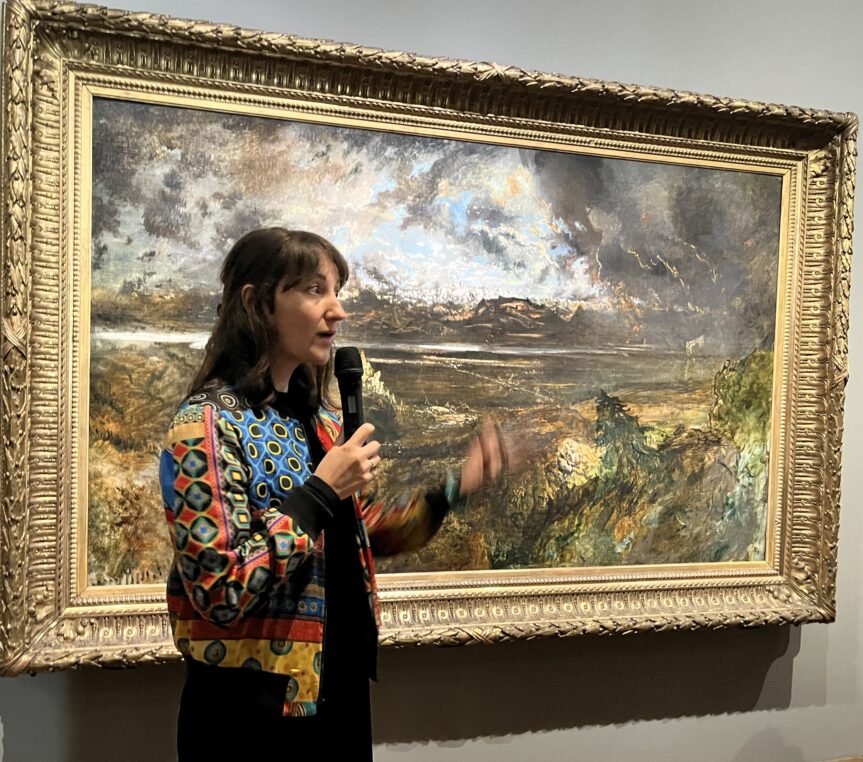
Servane Dargnies-de Vitry in front of “Le Mont Blanc seen from la Faucille, storm effect”, 1834, Ny Carlsberg Glyptotek, Copenhagen
Towards the end of the show, a staggering “Massacre of the Innocents” refers to the Biblical story of the murder of all children under the age of 2 in Bethlehem on the orders of King Herod. By comparing the oaks to the innocents, Rousseau sought to raise awareness about the destruction of the forest where fast growing pines replaced the noble trees…
He uses all kinds of medium, oi on paper, oil on canvas, oil on wood, and his drawings are quite spectacular such as “Sunset over a Plain”, a charcoal with pastel on pink paper lent by the Louvre
The exhibition ( until July 7) is curated by Servane Dargnies-de Vitry (now at Musée d’Orsay).
Many workshops are organized with painters and lithographers and various children activities take place including concerts in the auditorium. The very large show, Le Paris de la Modernité is till on until April 14.
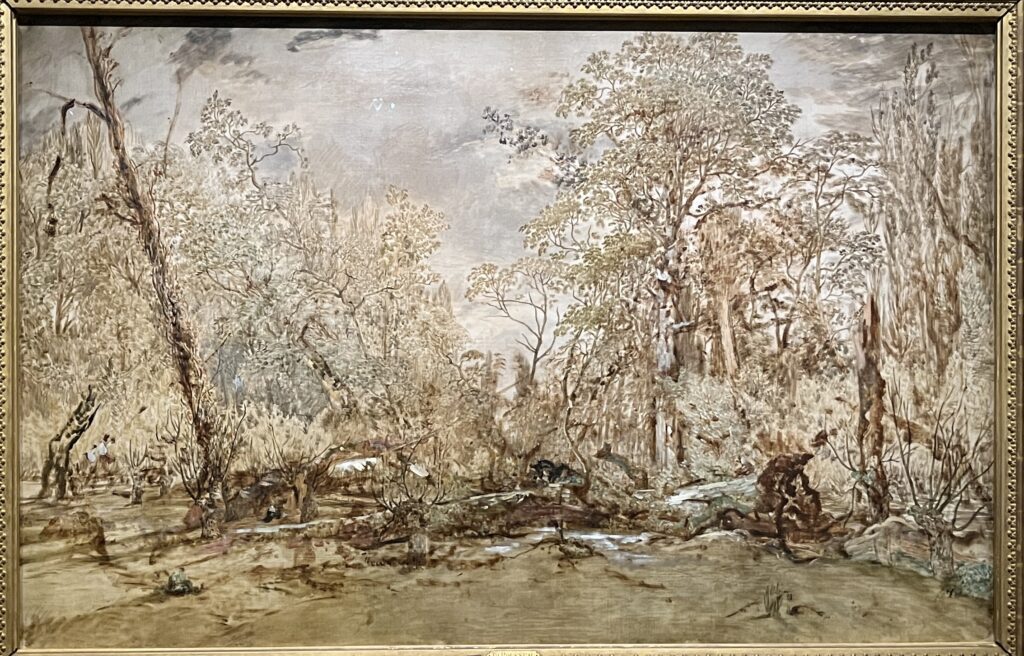
“The Massacre of the Innocents or Felling trees on the Ile de Croissy”, 1847, The Hague, De Message Collectie
An exhibit takes place in Théodore Rousseau’s house/museum, 55 rue Grande, in Barbizon.
Share this Post
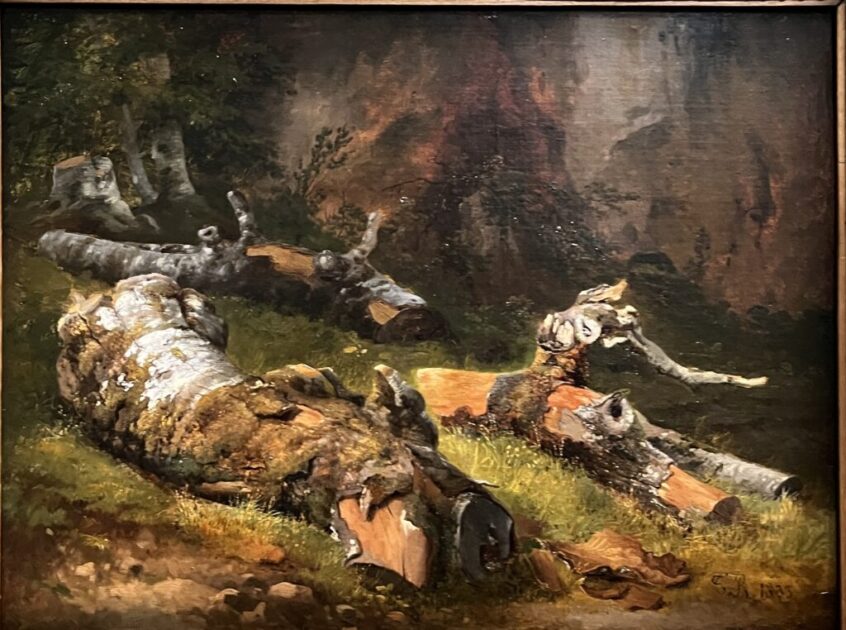

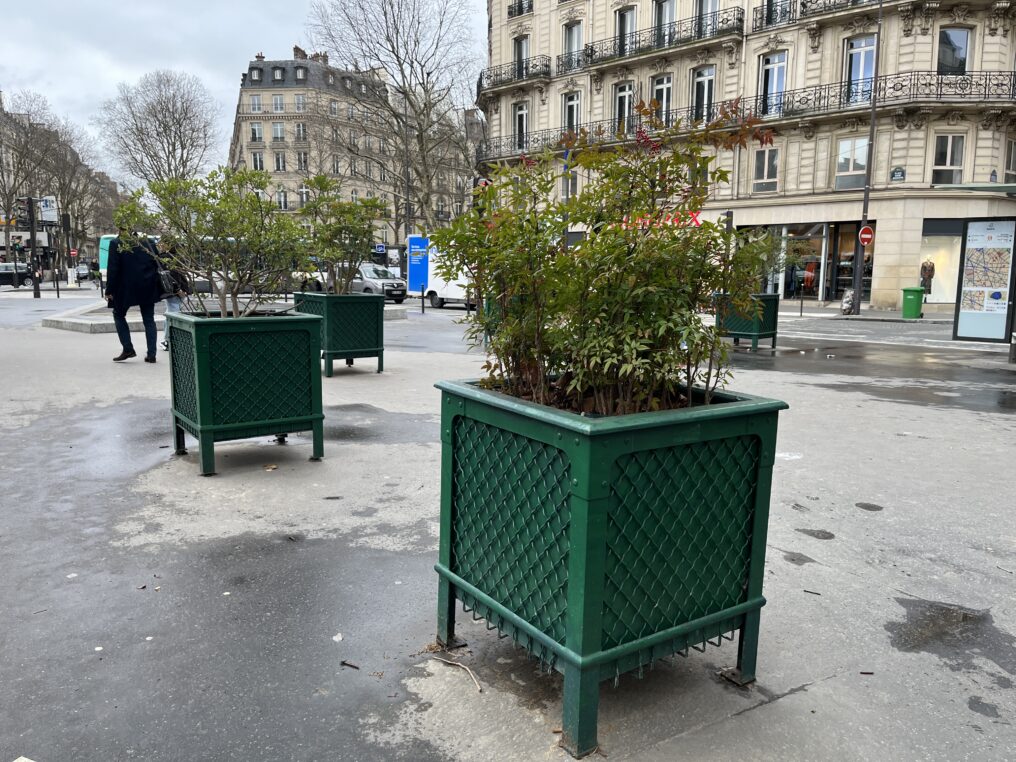

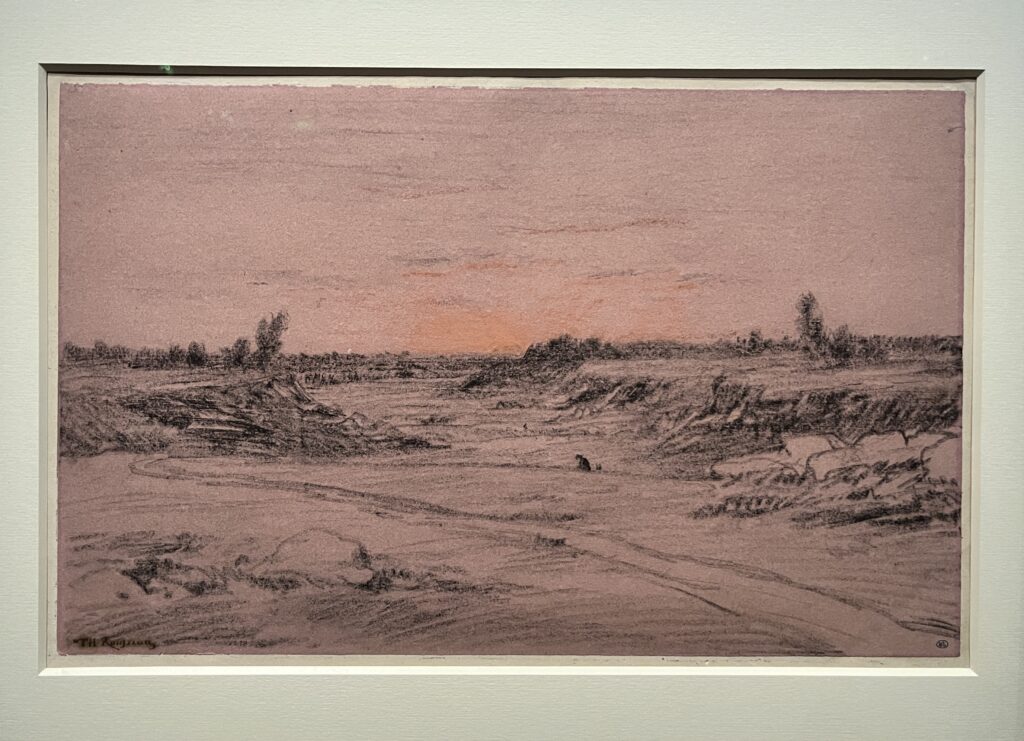
3 Comments on “Théodore Rousseau, a XIX th century environmentalist, at Petit Palais”
A wonderful old tree was ‘removed’ on our street overnight on quai de Bethune…obviously so more spectators can view the opening ceremonies along the Seine
Beautiful review.
Ah yes, we all need to understand that trees are a precious and beautiful resource!